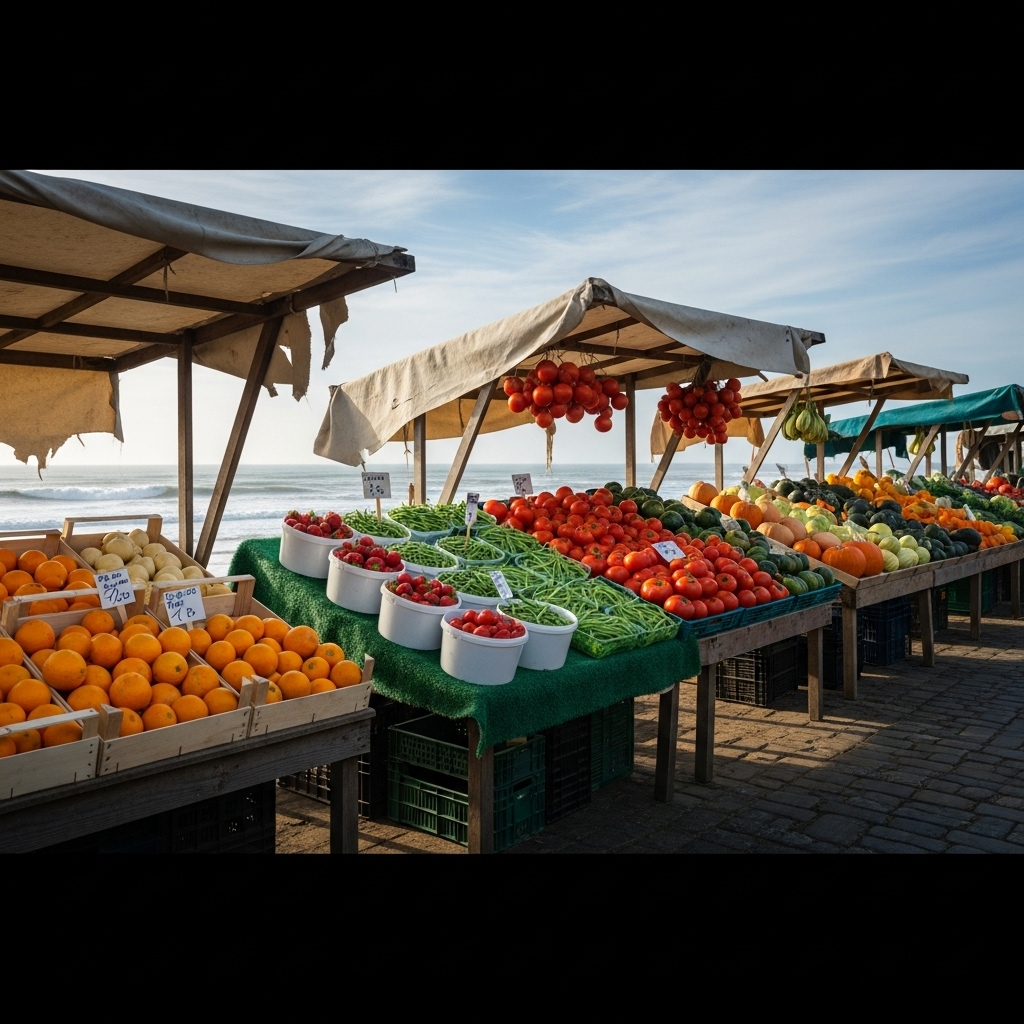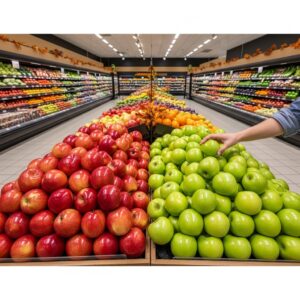Anyone who shops the markets in Malibu for more than a season learns that availability is a living thing. It moves with fog and wind, with cold nights and sudden heat, with the open ocean and the hidden canyons that hold cool air long past sunrise. You can’t force a list onto the stalls here; instead, you learn to read the signs and let the week’s offerings shape your meals. By the time you’ve made a few loops around the vendors, patterns emerge—tomatoes stacked like sunlit bricks in late summer, citrus shining in winter, and a quiet crowd around the seafood table when halibut hits sweet and clean. If you like to plan ahead, a quick glance at the weekly deals gives you a sense of what’s plentiful now so you can build a menu that matches reality rather than wishful thinking.
Availability in Malibu is really about microclimates talking to one another. On a morning when the marine layer lingers, greens are crisp and herbs hold their perfume, but tomatoes might stall in ripening. A hot week changes the tune: cucumbers leap, melons perfume the air, and peppers sweeten. Out at sea, wind and swell nudge fishermen to different grounds, and their coolers tell the story—some weeks brimming with rockfish, others a few trays of uni that disappear by midmorning. Everything is dynamic, and the more time you spend amid the stalls, the better you get at hearing what the landscape is saying.
Winter: A Citrus Chorus and Sturdy Greens
In winter, markets glow with citrus. Mandarins tumble like bright marbles, grapefruits wear a pearl-pink interior, and Meyer lemons perfume the air. These fruits are consistent because cool nights concentrate sugars, and our coastal buffers keep frost at bay in many orchards. Alongside them, you’ll find reliable greens—kale, chard, collards—plus carrots that taste of sweet earth and beets built for slow roasting. Avocados begin to hit their stride, a welcome richness during cooler months. If winds kick up, some vendors will pack early, but the quality remains high, tucked under canopies and blankets to retain warmth.
Seafood in winter mirrors the calm clarity of the air. Halibut and rockfish are common, with occasional catches that draw a line of diehards. The rhythm of the sea feels steady, and the fish, iced carefully and handled close to the pier, deliver clean flavors that make simple cooking feel luxurious.
Spring: Tender Things and the Pleasure of Firsts
Spring’s joy is in the firsts—first strawberries, first peas, first asparagus. Availability can swing from week to week, especially if we get a late rain or a cool snap. Greens surge in this window, and herbs arrive in quantity, their scent more potent for the damp mornings. Vendors often carry young onions and garlic, subtle and sweet, ideal for quick sautés that bridge the seasons. You’ll notice shoppers leaning into salads and lighter cooking as the sun lingers later in the day.
Offshore, currents can shift, and you’ll hear fishmongers talk about where they set gear and whether the kelp forests are thick. Their tables might show spot prawns on some mornings and trays of uni on others, delicate items that reward early arrival. Spring is a time to be flexible and curious; availability invites a little improvisation.
Summer: Abundance With a Breeze
Summer is Malibu’s showcase. Tomatoes in every shape, cucumbers that cut like cool water, peppers that sparkle with sweetness, and eggplants that soak up smoke. Melons sit heavy and fragrant, stone fruit crowds baskets, and basil behaves like a weed in the best possible way. Heat drives this abundance, but the afternoon ocean breeze keeps produce from wilting on the tables. On especially hot weeks, some delicate greens might bow out by late morning, so plan accordingly if salad is your centerpiece.
Seafood thrives under summer’s long days. Fishermen adjust their schedules to beat heat and crowds, and coolers stay replenished with sturdy fillets suitable for grilling. On lucky days, you’ll see sardines or mackerel, the kinds of fish that love high heat and quick cooking. The smart move is to buy fish early, tuck it into a cooler in your trunk, and do the rest of your shopping at an easy pace.
Fall: Quiet Richness and Steady Rhythm
Fall is the season of measured abundance. Apples and pears arrive with skins that snap, persimmons split the difference between dessert and salad, and squash takes the lead in the roasting pan. Herbs remain aromatic, and late-season tomatoes hang on in the warm afternoons. Pomegranates open like fireworks in the hand, and greens return with vigor as nights cool. Availability in fall feels generous but not overwhelming; it’s a time to plan slow meals and take a breath after summer’s parade.
Off the coast, spiny lobster draws crowds when legal seasons align. Rockfish remains reliable, and halibut returns as a steady presence. The sense of rhythm extends to the market itself—regulars know which stalls to hit first, and vendors know who’s coming for what, stacking boxes aside for familiar faces.
Reading the Market Week by Week
While seasons set the theme, the week-to-week verse is written by weather. A late heat spike can suddenly swell melon inventory, prompting impromptu tastings at the fruit stands. A windy morning might mean tents secured low and delicate items tucked away, so you’ll want to ask what’s hidden in coolers. After a rain, carrots and greens seem washed by the sky itself, while some fields pause to dry before harvest resumes. Learning to ask, “What’s best today?” is the most Malibu question you can pose. It opens a door to secret stashes, to the farmer’s favorite row, to the box under the table with the fruit meant for those who ask.
Availability extends beyond produce to pantry staples. Bakers tune their schedules to humidity and heat; cheese makers adjust affinage with ambient conditions; prepared-food vendors come and go with the seasons. It’s all part of the same dance, and once you see it, you find yourself shopping with attention rather than habit.
Planning a Flexible Shopping List
The trick to shopping smart in Malibu is writing a list in pencil. Jot down categories—greens, fruit, something crunchy, something to roast—and then let the market fill in the specifics. If tomatoes are shy, maybe peppers take the lead; if strawberries sell out, figs step in with a different kind of sweetness. Build meals around what’s plentiful, and you’ll bring home better flavor and fewer regrets. It helps to think in pairings: something raw with something cooked, something bright with something rich. The seafood table completes the picture, guiding you toward a fish that suits your plan and the day’s weather.
Midway through your loop, if you’re still undecided, glance at the weekly deals for a nudge. Often what’s abundant at the source aligns with what inspires vendors to celebrate at their stalls. It’s encouragement to pivot, not pressure, and it keeps your cooking grounded in what the land and sea want to offer now.
Storage and Prep to Extend Availability at Home
Availability doesn’t end at the checkout; it continues in your kitchen. Greens last longer if washed and dried as soon as you’re home, tomatoes taste better left on the counter out of direct sun, and herbs love a jar of water. Fish appreciates a cool resting place and a short window before cooking, so plan to let it star in the first meal. Root vegetables forgive a busy week and wait patiently in a cool drawer. With a little care, you can turn a morning’s abundance into a week’s worth of easy decisions.
There’s also the gentle art of preserving the season’s mood. Freeze a tray of berries, roast and cube extra squash, or blend a sauce from herbs that are threatening to overwhelm your cutting board. Those small acts stretch availability into the future, and on a foggy evening in May, a jar of last August’s tomato water can taste like sunshine.
Frequently Asked Questions
Why do certain items sell out so quickly?
Some crops and seafood are inherently limited, either by field size, harvest windows, or legal seasons. Regulars know to arrive early and to ask vendors if they hold a small reserve behind the table. Scarcity is part of the market’s charm—it means you’re tasting something at its peak.
How can I predict what will be available each week?
Follow the seasons and the weather. After a heat wave, expect abundant summer fruit; after cool, foggy mornings, look for delicate greens at their best. A quick conversation with your favorite vendors the week prior also helps—they’ll preview what’s about to crest.
Is there a best day for variety?
The first market after favorable weather often feels most abundant, but variety depends on vendor schedules and field conditions. Rather than chasing a day, build relationships so you can ask what’s worth seeking out when you arrive.
How do I adapt recipes to the market’s availability?
Think in functions instead of specifics. If a recipe calls for spinach, any tender green may do. If it calls for lemon, consider a tangy orange or vinegar. Seafood swaps are similar: a firm white fish stands in for another with minor adjustments. Cooking with availability is about texture, acid, sweetness, and heat.
What about rain or wind—do markets still operate?
Light rain rarely stops a Malibu market, though some vendors may cut back. Strong winds might prompt earlier closures of individual stalls. Dress for the weather, and don’t be shy about asking whether anything special is tucked away for those who braved the elements.
How do I make produce last through the week?
Handle delicately at home: wash and dry greens right away, keep herbs in water, store berries shallow, and leave tomatoes at room temperature. Plan meals so perishables star early and sturdier items anchor later days. Your fridge becomes an extension of the market when you treat it like a cool, calm stall.
Imagine leaving the stalls with a bag that smells of basil and a cooler humming softly with fresh fish. The week ahead feels suddenly simple, each meal a small answer to the question of what’s best right now. Start with what’s abundant, say yes to a substitution or two, and let curiosity be your guide. If you want a hint about what’s overflowing this week, check the weekly deals, sketch a quick plan, and walk into the market ready to pivot toward flavor.
When you’re ready to shop with the season instead of against it, give yourself the gift of time at the stalls. Talk to the growers, ask the fishmonger what moved that morning, and build your meals from that conversation. To turn intention into action, glance at the weekly deals, write a flexible list, and let Malibu’s land and sea fill in the rest. It’s the easiest way to eat food that tastes like it belongs here—because it does.




